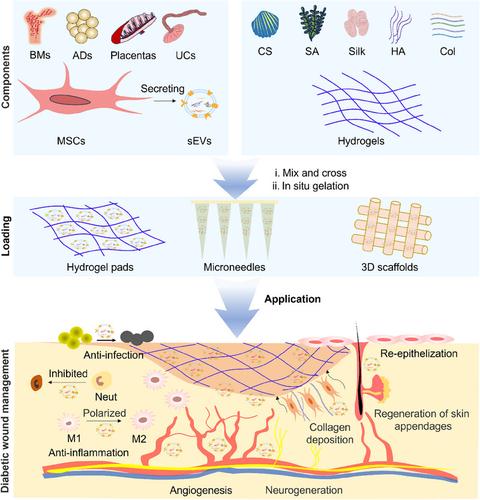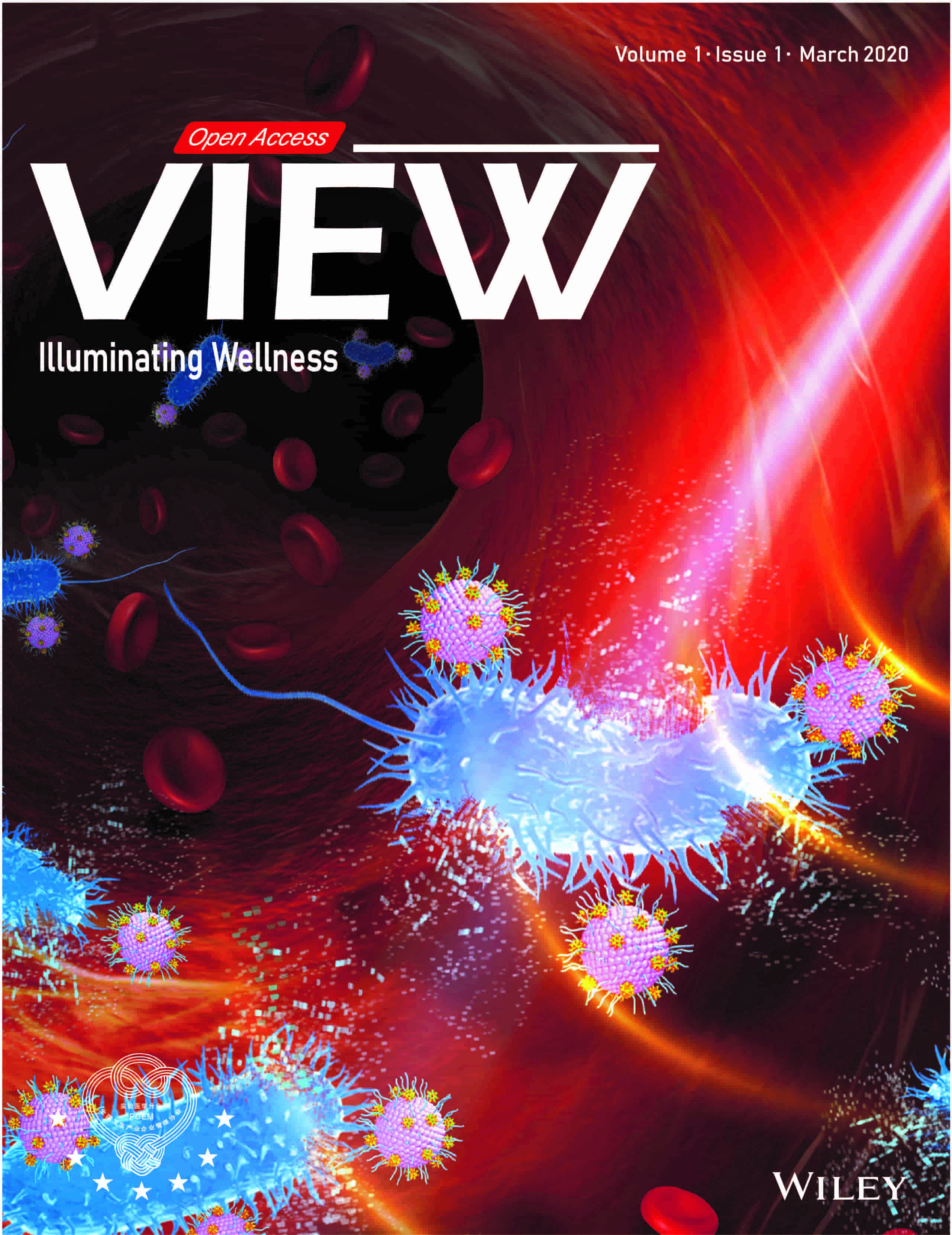Hydrogels loaded with MSC-derived small extracellular vesicles: A novel cell-free tissue engineering system for diabetic wound management
IF 8.5
4区 医学
Q1 MATERIALS SCIENCE, BIOMATERIALS
引用次数: 0
Abstract
With the aging and obesity era, the increasing incidence of diabetes and diabetic complications, especially the non-healing wounds, imposes a serious economic burden on both patients and society. The complex microenvironments, including hyperglycemia, bacterial infection, ischemia, and nerve damage, lead to the prolonged inflammation and proliferation phase of diabetic wounds. Mesenchymal stem cell-derived small extracellular vesicles (MSC-sEVs), which contain a rich variety of therapeutic molecules, have been chased for decades because of their potential roles in cellular communication, tissue regeneration, and drug delivery. As powerful tools for the controlled-sustained release of sEVs, biocompatible hydrogels have been applied in a wide range of biomedical applications. Herein, we first summarize the pathological features of diabetic wounds, such as angiopathy, neuropathy, and immune cell dysfunction. Then, we discuss the biological properties, therapeutic performance, and stability of pure MSC-sEVs. After that, we discuss the components, application patterns, and responsiveness of hydrogels. Next, we discuss the loading avenues of MSC-sEVs into hydrogel, the release behaviors of sEVs from hydrogels, and the influence of the crosslinking method on the hydrogel-sEV composites. Finally, we provide an overview of the current applications of hydrogels loaded with MSC-sEVs as a novel cell-free tissue engineering system in managing diabetic wounds and propose the critical unsolved issues. This review is expected to provide meaningful guidance for developing a novel cell-free tissue engineering system for diabetic wound management.

含有间充质干细胞衍生小细胞外囊泡的水凝胶:用于糖尿病伤口管理的新型无细胞组织工程系统
随着老龄化和肥胖化时代的到来,糖尿病和糖尿病并发症的发病率不断上升,尤其是伤口不愈合,给患者和社会带来了严重的经济负担。高血糖、细菌感染、缺血和神经损伤等复杂的微环境导致糖尿病伤口长期处于炎症和增殖阶段。间充质干细胞衍生的细胞外小泡(MSC-sEVs)含有丰富的治疗分子,由于其在细胞通讯、组织再生和药物输送方面的潜在作用,几十年来一直受到人们的追捧。作为受控持续释放囊泡的有力工具,生物相容性水凝胶已被广泛应用于生物医学领域。在此,我们首先总结了糖尿病伤口的病理特征,如血管病变、神经病变和免疫细胞功能障碍。然后,我们讨论了纯间叶干细胞-SEVs 的生物学特性、治疗性能和稳定性。然后,我们讨论水凝胶的成分、应用模式和响应性。接着,我们讨论了间充质干细胞-sEVs 在水凝胶中的负载途径、sEVs 从水凝胶中的释放行为以及交联方法对水凝胶-sEV 复合材料的影响。最后,我们概述了目前负载间充质干细胞-sEVs 的水凝胶作为一种新型无细胞组织工程系统在糖尿病伤口管理中的应用,并提出了尚未解决的关键问题。本综述有望为开发用于糖尿病伤口管理的新型无细胞组织工程系统提供有意义的指导。
本文章由计算机程序翻译,如有差异,请以英文原文为准。
求助全文
约1分钟内获得全文
求助全文
来源期刊

VIEW
Multiple-
CiteScore
12.60
自引率
2.30%
发文量
0
审稿时长
10 weeks
期刊介绍:
View publishes scientific articles studying novel crucial contributions in the areas of Biomaterials and General Chemistry. View features original academic papers which go through peer review by experts in the given subject area.View encourages submissions from the research community where the priority will be on the originality and the practical impact of the reported research.
 求助内容:
求助内容: 应助结果提醒方式:
应助结果提醒方式:


